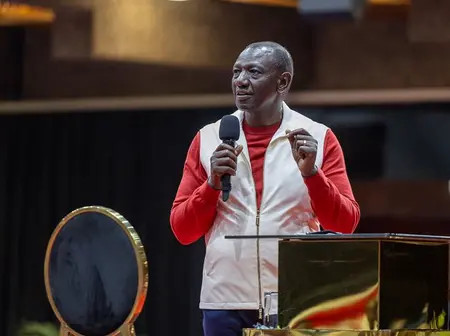State House, led by President William Ruto, who has big dreams of turning Kenya into Singapore, has come under sharp scrutiny after a new report by the Controller of Budget (CoB) flagged massive withdrawals amounting to Sh3.6 billion in just 42 days for travel, hospitality, fuel, and vehicle maintenance.
The revelations, contained in the CoB’s latest expenditure report, have raised fresh concerns about fiscal discipline and government spending priorities, especially at a time when Kenyans are grappling with a high cost of living and widespread calls for austerity.
According to the report, the funds were released between May 14 and June 24, 2025—barely a week before the end of the financial year. The disbursements were made under Article 223 of the Constitution, which permits the National Treasury to authorise spending on unforeseen emergencies not included in the budget approved by Parliament.
Treasury Cabinet Secretary John Mbadi is reported to have approved three separate allocations for the Executive Office of the President during this period. On May 14, he signed off on Sh1.5 billion to cover shortfalls in State House operations, including domestic travel, hospitality, fuel, and vehicle upkeep. A further Sh850 million was released on June 13 for similar purposes.
However, not all of these funds went through the proper oversight channels. CoB Margaret Nyakang’o, whose office is constitutionally mandated to authorise all withdrawals from public coffers, confirmed that she only approved Sh2.3 billion of the total. The approvals came in seven tranches, including Sh358.16 million on May 15, Sh263.46 million on May 21, Sh626.5 million on May 27, Sh250 million on May 28, and Sh738 million disbursed in three tranches between June 17 and June 24.
A withdrawal of Sh1.25 billion, approved by the Treasury on May 15, was never submitted to the CoB for authorisation. Dr. Nyakang’o further disclosed that her office identified Sh17.4 billion in government spending across the financial year that did not receive her approval, contrary to constitutional requirements.
“During the financial year, the Controller of Budget authorised withdrawal of Sh66.54 billion under Article 223 of the Constitution compared to Sh83.96 billion approved by the CS, National Treasury. The difference of Sh17.42 billion constitutes approvals granted by the CS, but not requisitioned for approval of withdrawal by the CoB,” she stated in the report.
The National Assembly later gave post-facto approval to the additional funding in the third supplementary budget in June. But the revelation has reignited debate over the abuse of Article 223 to finance non-emergency expenditures.
Beyond the State House, other departments also made hefty withdrawals under the same constitutional provision. These included Sh200 million by the State Department of Forestry for tree planting, Sh1 billion by the National Police Service for security, Sh500 million by the State Department for Internal Security, and Sh450 million by the State Department for Roads for upgrades in Homa Bay County. The National Intelligence Service (NIS) received Sh2 billion for security operations, while an additional Sh1 billion approved by the Treasury for the spy agency did not go through CoB approval.
The CoB report also shone a spotlight on high operating costs at the Executive Office of the President. In the 2024/2025 financial year, State House reportedly spent Sh817 million on printing services alone—an average of Sh2 million every day. These costs covered printing of executive orders, directives, press statements, policy documents, and invitations for various State House events.
Observers argue that the latest revelations undermine the government’s pledge to rein in excessive spending and demonstrate the loopholes in Kenya’s public finance management system. With pressure mounting from both oversight institutions and the public, fiscal accountability at the highest office in the land is likely to remain under intense debate in the months ahead.

Leave a Reply